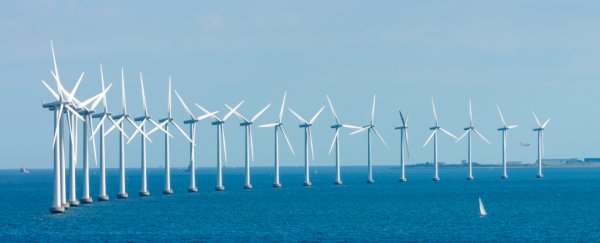Australia's leading medical funding body has just awarded researchers more than AUD$3 million dollars (US$2.2 million) to investigate whether living near wind turbines can make people sick - so called 'wind turbine sickness'.
It's a move that's been criticised by some scientists and environmentalists, seeing as the same funding body last year found "no direct evidence that exposure to wind farm noise affects physical or mental health". But the National Health and Medical Research Council (NHMRC) maintains that further high-quality research needs to be done on the topic.
Wind turbine sickness is the name given to the range of symptoms experienced by some people living in close proximity to wind farms, including dizziness, headaches, sleep disturbances, nausea, and irritability.
The hypothesis is that infrasound produced by wind turbines could be causing these symptoms, but a 1.5-year study by the NHMRC didn't find any links between the condition and proximity to wind turbines.
Still, the NHMRC said that their initial study contained "limited reliable evidence", so they've now funded two more investigations over the course of five years, at a cost of AUD$3.3 million.
That all sounds fair enough. But not only have repeated studies and 19 reviews of the literature failed to find direct evidence to link this condition with wind farms, it's also not consistently experienced by those living near turbines.
While cases have been reported in Australia, the UK, and North America, there have been next to no complaints out of Germany, Denmark, and Spain, where wind turbines are far more common (Denmark got a record-breaking 42 percent of its electricity from wind last year).
And, strangely enough, non-English speakers don't seem to experience the condition.
That's not to say these people aren't suffering and their symptoms aren't real, but many scientists suggest that there are psycho-social causes for the condition, rather than physical ones.
"There is no accepted physiological mechanism where sub-audible infrasound could cause health effects," said Geoffrey Dobb, the Vice President and Chair of the Australian Medical Association's Public Health Committee, back in 2014. (In the same statement he reminded people that greenhouse gasses and other pollutants produced by burning fossil fuels, on the other hand, do have significant and demonstrated direct negative health effects.)
"People living near wind farms who experience adverse health or wellbeing may well do so because of heightened anxiety or negative perceptions about wind farms," he added.
Indeed, multiple studies have also found that people who experience wind turbine sickness were almost always told beforehand that the farms would be detrimental to their health.
In other words, they're so freaked out or unhappy about wind turbines being installed near them that they become ill.
The concern now is that spending more money and time on wind turbine sickness is giving the coal industry an excuse to drag their feet when it comes to building new wind turbines.
"Wind farm opponents in parliament will soon have a ready-made excuse to argue for moratoriums on further wind farm development," Simon Chapman, a professor of public health at the University of Sydney, told The Conversation.
There's also the issue of whether the money could be better spent elsewhere, considering only around 15 percent of NHMRC grants applications ever get funded.
Looking into the psychological aspect - and potential treatments - of wind turbine sickness might be a better investment, according to Will Grant, a science communicator from the Australian National University.
"There's a lot of suggestion from the academic community that it's a psychological or psychogenic illness," he told The Conversation last year. "The interesting thing is that there hasn't been a full research study that has investigated if it's a psychological cause, what are the things that cause that, what are the things that contribute to that, and could we actually mitigate that."
The NHMRC has defended its decision by emphasising the fact that the two newly funded projects will be high quality, and will involve lab work, which will eliminate all the variables and hopefully provide some solid answers on the topic.
"There is a genuine scientific question here that needs to be solved definitively so we can inform both the public and public policy," Ron Grunstein, a sleep expert at the University of Sydney, who was involved with the NHMRC reference group, told the Australian Journal of Pharmacy.
And just in case you needed a reminder, here's what these "visually awful" wind turbines look like compared to the coal industry in the Australian landscape. Just sayin'.
The wind farm at Lake George, Australian Capital Territory vs. Loy Yang coal mine in Victoria, Australia:
Foote Creek, Wyoming vs. Hazelwood power station, Victoria, Australia:


